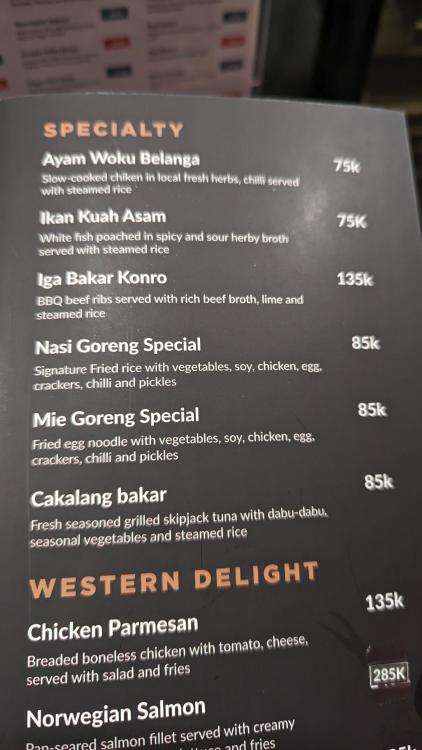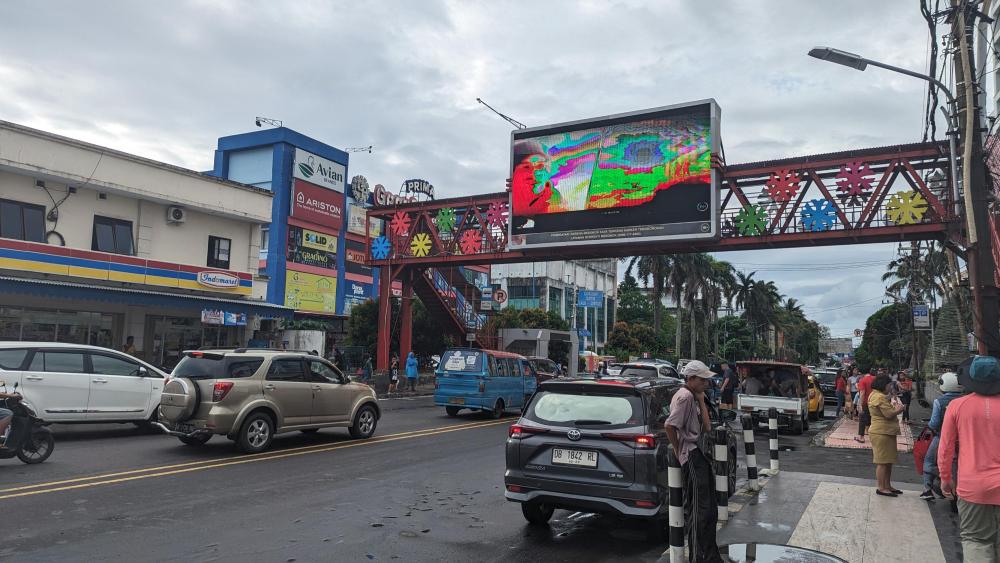After breakfast was another transit day. Small boat to the dock on the mainland, then 1.5 hour car ride to the city of Manado. There isn't much touristy stuff in Manado, so the original plan was to use it as a base to explore the Minahasa highlands around the city and maybe hit a market or two. In addition to the standard fruit I usually look for, I was also looking to bring home some kencur - Indonesian sand ginger. It's used in lots of Indonesian dishes, but is impossible to find in the US unless you want dried which is a totally different thing. I had already applied for and received permission to bring it in from the USDA, just as long as there is no dirt or pests attached to it. I had also wanted to find an Indonesian mortar/pestle - which looks more like a flat plate than the Thai style.
When we arrived at the hotel, our room wasn't ready yet, so we hung out in the lobby a bit and then went to the hotel restaurant for lunch. Interestingly, I'd say at least 95% of the hotel occupants that I saw over our 4 days there were domestic Indonesian travelers, and most of the hotel staff spoke no English at all, which is pretty uncommon. Really glad I brushed up on my Bahasa!!! The hotel has the only Italian restaurant in the city but they also have some local Indonesian dishes. I took a photo of the menu of the local section:
Ikan kuah asam - a fish soup with big chunks of some kind of white fish in a clear sour broth. The fish was dry (that's the style of cooking fish here - you'll see why later) but the soup had a nice sour flavor.
Served with rice:
Cakalang bakar dabu-dabu - grilled skipjack tuna with sambal dabu-dabu. Dabu-dabu (which means chopped) is local to this area, although it has spread all over Indonesia. As far as I know, it is unique among Indonesian sambals as it is a raw sambal - most sambal are ground and then fried to bring out the flavor. This one is a raw combination of green and red tomato (both underripe and sour), shallots and chillies. Hot oil is then poured over the sambal to help bring out some flavor, but it is still essentially raw. And holy crap is it hot!!! This was one of the hottest things I've had in my life. The tuna was also very dry, but lubricated by the sambal as well as my excessive salivation and mucus coming out of my nose. It turns out that the local Minahasa people pride themselves on the fact that the locally grown chillies are hotter than any other in Indonesia! They say that because theirs is the spiciest, their food is the best.
After checking into our room and unpacking a bit, we took a quick walk around because I needed to find an ATM and I wanted to get more water for the room. Quite a few people who were just hanging around on the street were eyeing us like pieces of meat - I don't know if they're just not used to seeing white people or anything else but it did make us a bit uneasy - which could have entirely been in our heads. But we decided to have dinner in the hotel as I still wasn't feeling 100% and all of the places I was looking at going to were a taxi ride to a different neighborhood and we had to wake up early to meet our driver for our highland trip.
But first, a few street shots:
Fresh squeezed lime juice
Ayam woku (chicken in woku curry) - this was awesome. Similar to the ikan woku (fish woku) that we had on the island, woku curry is a specialty of the Minahasa people of the region. It has a pretty standard bumbu (spice paste) of galangal, shallots, chillies, etc. but also uses a bunch of leafy herbs which are finely sliced - turmeric leaves, green onion, pandan leaves and basil.
Served with:
Rice and krupuk udang (shrimp chips)
Mee goreng - this version used a lot of kecap manis (sweet soy sauce) and they must have had a really hot wok because there was a great char aroma to it.













